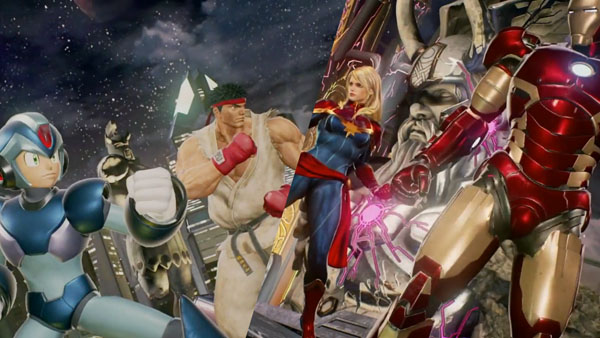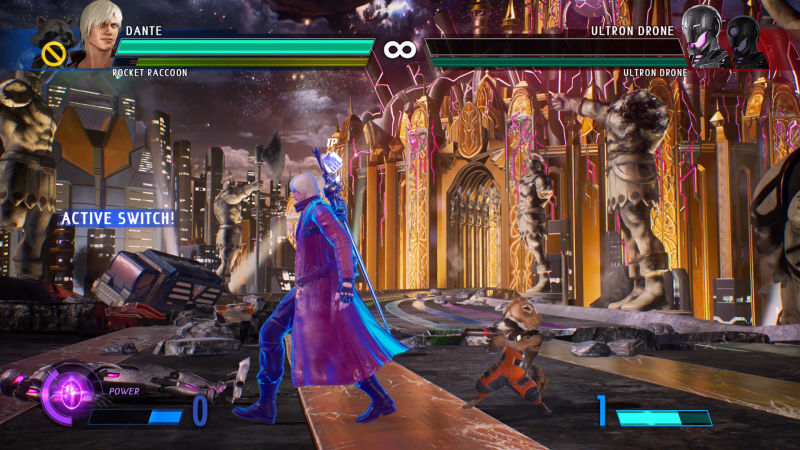

The roster may be smaller than usual, but the fast tagging system opens the door for creative combos But Infinite also employs two systems to invite new players in. The Infinity Stones are an even deeper level of complexity that might scare off casual players.

The roster may be smaller than usual, but the fast tagging system really opens up options for clever combo creation. Capcom: Infinite’s revised core mechanics make it arguably the most complex entry in the crossover series. Infinity Stones aren’t game-enders, but they give you strategic options that feel great. Locking your opponent in a blue, glowing box with the Space Stone doesn’t stop them from shooting projectiles across the screen at you. Almost every trick can be blocked, avoided or countered. These stones don’t feel overpowered, despite their strong abilities. (This one seems particularly powerful, because it can also resurrect a dead character.) Capcom The yellow Mind Stone, for example, rapidly fills your hyper combo meter - the game’s super move - while the orange Soul Stone sends both your fighters on the attack at once. If you activate an Infinity Surge with the blue Space Stone, for example, you can pull your opponent closer, ending a game of keep away and opening up new attacks.Įach use of your Infinity Stone will deplete your infinity gauge, but if you can fill it up enough - by dealing and receiving damage - you’ll have access to an Infinity Storm, an ability which dramatically changes play for about 10 seconds. First, there’s the Infinity Surge, a special move that can be activated at any time. Each stone grants your team two levels of new power. Ripped from the pages of Marvel comics, players select from one of six Infinity Stones at the start of a match. Capcom: Infinite’s mechanics, and it dovetails nicely with the game’s new Infinity Stone system. This new system is a subtle change that deepens Marvel vs. From there, he can continue the combo and, moments later, we could tag Ryu back in to finish the combo. While Ryu is still completing his attack, Cap is in our control. This small functional change busts the door open to allow for some of the franchise’s most expressive gameplay yet.įor instance, a character like Ryu can perform a multi-hit attack like his Hurricane Kick and, mid-animation, we can tag out to Captain America. Instead of relying on a support character to pull off a single attack that would let your current character extend their combo, the fast tagging system allows you to keep a single combo rolling across multiple character swaps. This is one of its most clever innovations. Unlike past games in the crossover series, Infinite ditches the use of support attacks from other characters and instead lets you freely tag in your partner character. The roster is a mix of iconic - Mega Man X, Ryu and most of the Avengers - and more niche, like Darkstalkers villain Jedah and Dr. It trades in the three-on-three battles of more recent entries for two-versus-two matchups, where players pick from 30 characters from the two respective universes. Capcom: Infinite is a frantic, team-based fighting game.


 0 kommentar(er)
0 kommentar(er)
